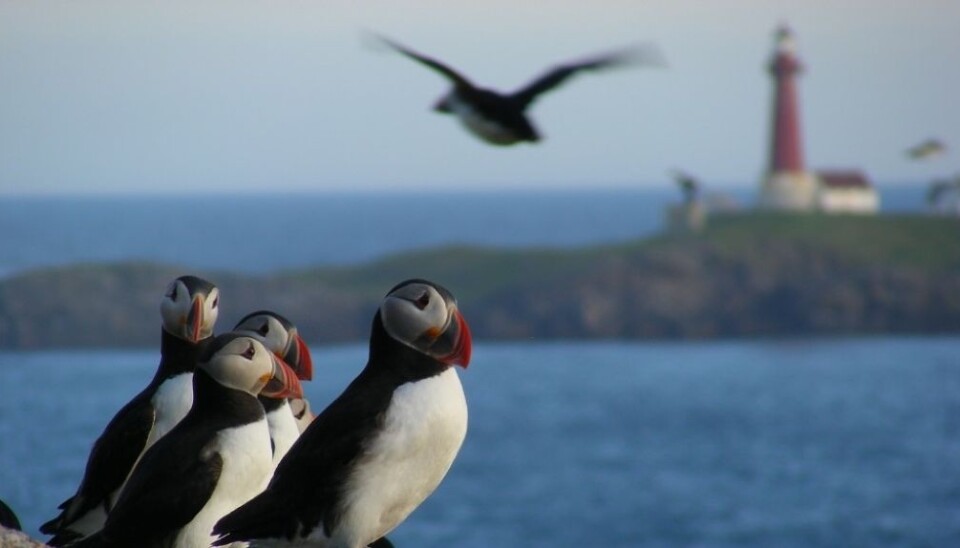
Puffin chicks die of hunger
For seven years now, Atlantic puffins have been abandoning chicks and eggs in their nesting colonies because they cannot find enough food. The ocean is teeming with mackerel which consume the small fish that puffins normally feed to their offspring.
Denne artikkelen er over ti år gammel og kan inneholde utdatert informasjon.
Nature is known to be fickle and a boon for one species will likely be the bane of another.
Scientists are eager to see what happens this spring when the puffins return to the Norwegian coast to nest in colonies.
The past seven years have been sad in the puffin colonies, especially the ones furthest south.
Eggs and chicks have been left to die as puffin parents give up on finding enough small fish for their offspring.
Key indicator
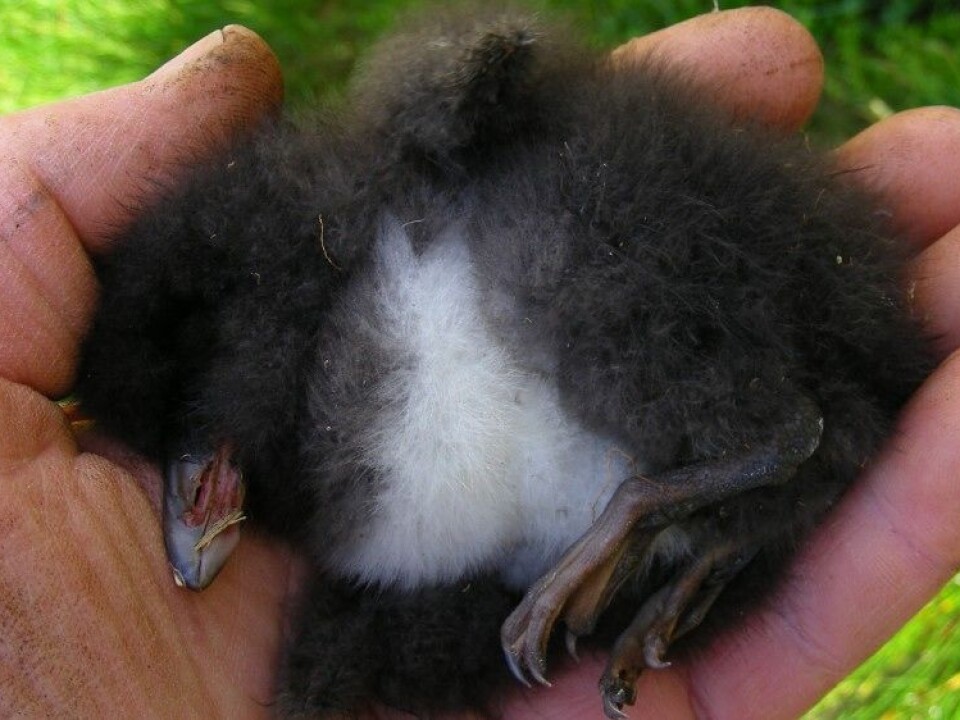
Seabirds are key indicators of marine ecosystems and the puffin, sometimes called “the parrot of the north” because of its colourful beak, is in a special predicament.
Norwegian scientists have studied the Atlantic puffin avidly for 50 years. They have comprehensive data on stocks of these migratory seabirds and their close link to the Norwegian spring-spawning herring, which is the birds’ main staple.
This is especially true for Røst, which has the coast’s largest puffin colonies.
Three-fourths are gone
The scientists have been particularly ardent in their studies of puffin stock developments since 1979, especially on Røst.
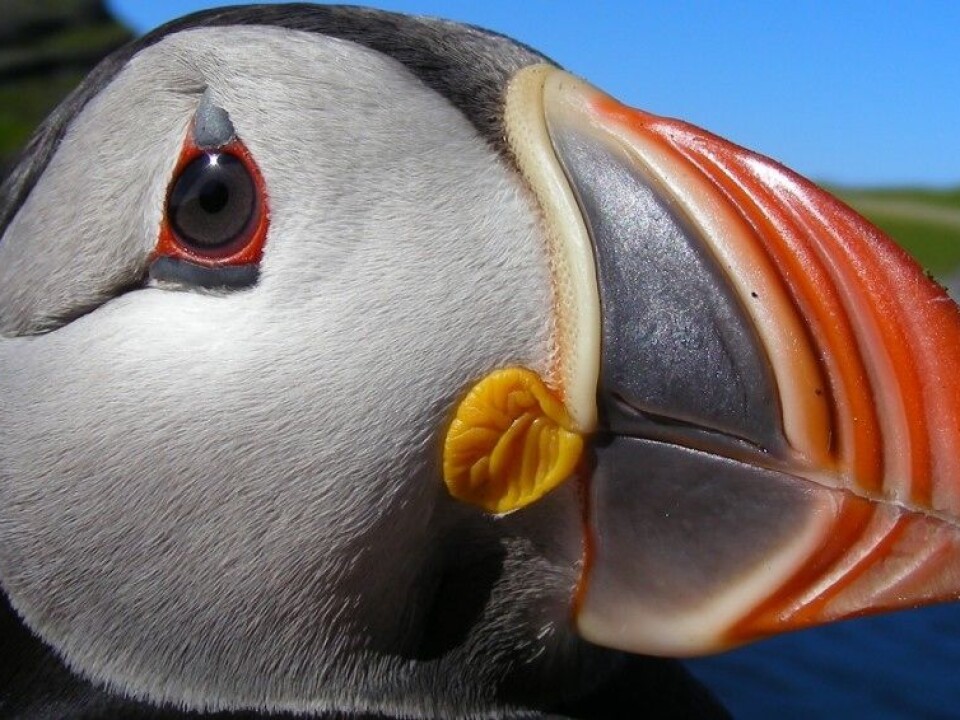
The isolated island municipality of Røst was the summer residence of 1.5 million breeding pairs of puffins just 35 years ago. Now only 350,000 to 400,000 of these life-long couples are left.
Fortunately, by migratory bird standards puffins are blessed with longevity.
The ones who make it past their juvenile stage of five to seven years normally live to be 15 to 20. The oldest individual which Senior Researcher Tycho Anker-Nilssen knows about made it to a ripe old 41. Anker-Nilssen works at the Norwegian Institute for Nature Research (NINA).
“This means that the bird has many years to nest. But a prolonged breakdown in access to small fish in the ocean areas around the colony is taking its toll. If a majority of these parent pairs fail to raise chicks many years in a row it could be critical for the size of the stock.”
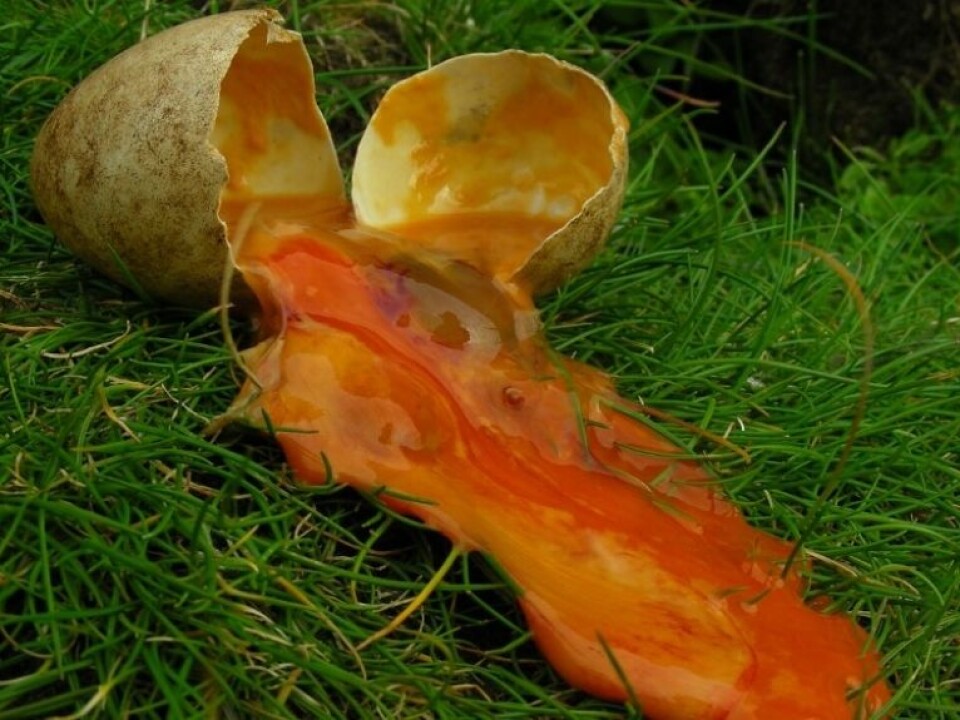
The Røst stock is currently diminishing by 7-8 percent per year, which is thought to equal the natural mortality rate of the adult birds.
Food shortage and changing climate
Mackerel, on the other hand, are enjoying a population boom. They eat some of the same food as the puffins.
A warmer ocean has opened up rich new feeding grounds for this effective fish. Mackerel can migrate fast and a course on their menu is herring fry. The fish also eats zooplankton which small herring need to survive.
Mackerel spawn far out at sea. This means mackerel fry, despite an upswing in stocks, are not an option for puffin parents while nesting in colonies along the coast.
Delicate balance
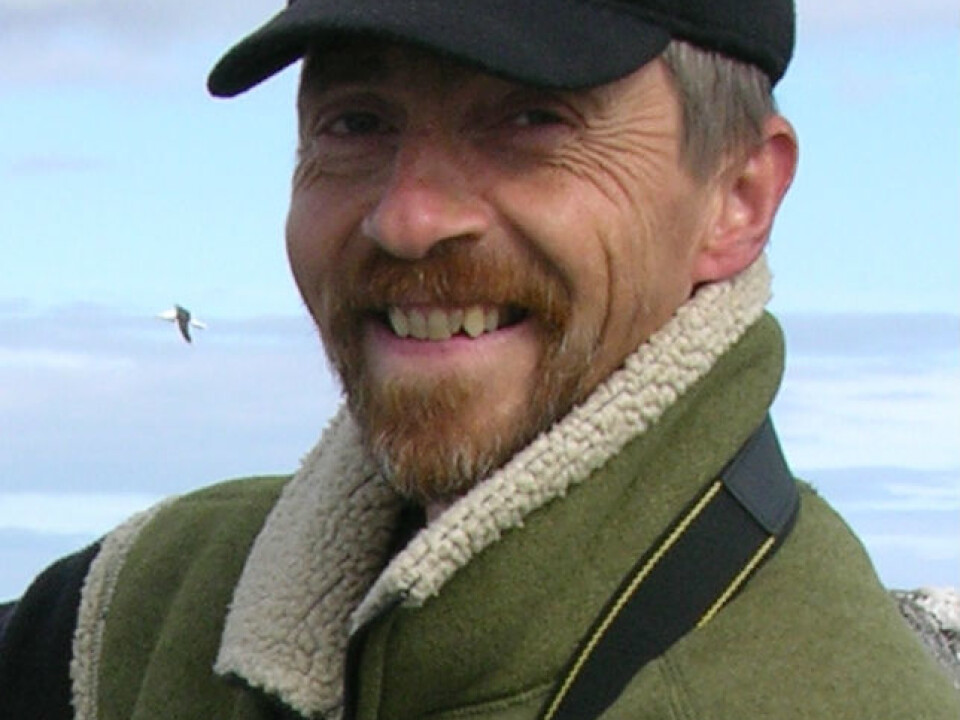
Anker-Nilssen is concerned.
“The food chain consists of delicate balances. Competition among certain key species determines the greater dynamics. Without understanding this balance it gets hard to manage fisheries to the advantage of the ecosystem,” says Anker-Nilssen.
We don’t currently know the size of mackerel stocks in the Atlantic.
“I wouldn’t sound the alarms on behalf of the herring but we’ve had several years now without good replenishment. Perhaps this could be counteracted by increasing limits on mackerel catches, which we haven’t done for several years,” he says.
More stability further north
Another large puffin colony is at Gjesvær near the North Cape –the northernmost spot on the European Continent. The Gjesvær population of the bird has remained stable.
Mackerel have not yet entered central areas of the Barents Sea, where a small fish, capelin, thrives in the absence of young herring. Anker-Nilssen thinks the capelin boom can be a reason why the puffin colony is faring much better up by the North Cape.
Røst is more vulnerable, and not just because of a warmer sea.
In the Røst region the coastal current which carries the herring fry northwards is widest, and the islands here are ringed in by rich ocean waters, with 100 km of continental shelf in all directions.
The current passes over these relatively shallow waters – of notoriety in maritime history for their maelstroms, which were exaggerated by seamen’s lore. This whirls up and exchanges water from different depths, which is beneficial for production of plankton and herring larvae. Mackerel are swift and persistent swimmers and can quickly eradicate a school of small herring in these waters.
A mismatch between the puffin and their food
Nevertheless, mackerel are just one of the factors in the wake of a warmer sea.
The reason why puffin chicks are starving or not being hatched at all off parts of the Norwegian coast is more complex than that.
One theory is served by Senior Researcher Leif Nøttestad at the Norwegian Institute of Marine Research.
Nesting activities among puffins are greatly guided by seasonal daylight. The bird comes back from the Norwegian Sea, where it has spent autumn and winter, when the days grow long in spring.
This makes the puffin’s nesting period pretty constant from year to year.
Herring, however, are steered by ocean temperatures and are much more flexible with regard to when they spawn. Sometimes this can be February – other times not until March and April.
Herring will tend to spawn early when the sea is warmer and late when the sea is colder.
“When the herring spawns early in the spring, as we’ve observed in recent years, the larvae drift northwards before the puffin’s nesting season has fully started.”
“The result is a mismatch between the puffin and its food,” says Nøttestad.
To improve its timing the puffin either needs to start nesting earlier or start further north.
Colony patriots
The seabird expert Anker-Nilssen would like to initiate cooperation with marine researchers to tack down the factors that are making puffins miss out on herring fry feasts.
“The birds like to nest in the same area where they hatched and they are faithful to their nesting colonies. They prefer to use the same nest from year to year. But young birds will sometimes choose other colonies to nest.”
Anker-Nilssen asserts that as long as the birds are faring better further north, the stock’s prime habitat will be edging northwards.
But he points out that such processes are slow.
------------
Read the Norwegian version of this article at forskning.no
Translated by: Glenn Ostling






























